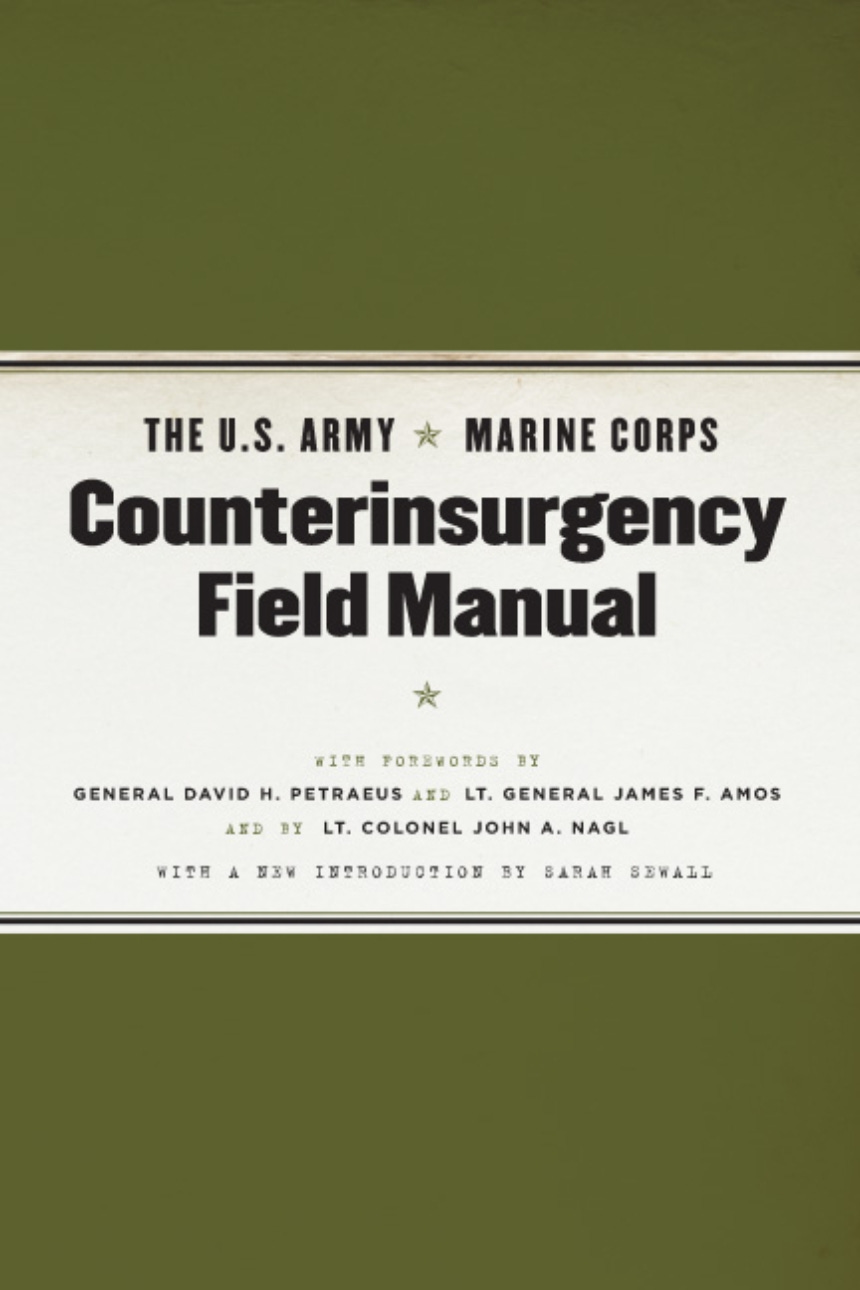They Didn't Read the Manual
Counterinsurgency and the reach of radicalization
I’m the kind of nerd that has a copy of the Counterinsurgency Field Manual on my bookshelf. I suppose it’s not a crazy set of circumstances. I served during the peak Global War on Terror (GWOT) time frame through the first half of the 2000s, and then again in the first half of the 2010s. I am fortunate enough never to have been called up to deploy overseas, but I knew several around me who did and it could have happened to me at any time. Plus, I thought at the time that there were several things one should just know about military strategy; regardless of branch of service, pay grade, or area of expertise. Counterinsurgency doctrine felt like one of those things.
Section 1-141 of this manual — titled “Use the Appropriate Level of Force” — says the following: “An operation that kills five insurgents is counterproductive if collateral damage leads to the recruitment of fifty more insurgents.” This is a rather sterile and clinical way of saying what seems pretty obvious, and has perpetuated cycles of violence throughout history. You kill mine, I kill yours. An eye for an eye and all that Old Testament stuff.
Speaking of biblical things, that provides a good segue to what this actually about: Palestine. Specifically, what Palestine has to do with a shooting in Washington D.C.
On May 21, 2025, two staff members of the Israeli Embassy in D.C. were fatally shot by a man that reportedly shouted “Free Palestine” upon his arrest. Judging by the shooter’s manifesto and his declared beliefs, the situation in Gaza was probably a motivating force behind his actions.
Before I go any further, I want to make a couple of things abundantly clear. I think it’s perfectly reasonable to simultaneously hold the beliefs that what Hamas did to start all this was wrong, and what Israel continues to do is wrong. And neither of these beliefs justify the actions of the aforementioned shooter. What follows is an attempt to explain the events and give context to them, not justify them.
Radicalization, as outlined in the Counterinsurgency Manual, used to be a local and regional effect. An army would come in and wipe out a family or a village. The survivors of said massacre would then, understandably, go on to hate those responsible. Some would commit terrible acts of violence as retribution for those actions. But this still keeps the violence close to home, as it were.
Ideologies have always had ways to circulate. Every subsequent technological advance made this easier and faster. But I would argue that the connection between two similar radicals on opposite sides of the world remains largely ideological and theoretical. It lacks the human connection of the of the radicalized fighter avenging their family or home.
The internet and social media have been sources of radicalization for years. Many of the far right “lone wolf” terrorists that have carried out shootings and other acts of terrorism throughout the U.S. were quite active on sites like 4-chan and 8-chan. Many viewed their actions through the lens of the online gaming communities they were part of, trying to get the new “high score” for their body count. They shared ideologies and theories, but their personal connection was limited to replying to one another’s posts. And then along came TikTok.
I’m not a TikTok user myself, but I did watch with some interest the whole “will they or won’t they?” situation regarding the potential sale of the platform due to their entanglements with the Chinese government. While it’s not evident that the U.S. government efforts to gain some control over TikTok had anything to do with its younger audience expressing Pro-Palestinian views, it’s an interesting coincidence. The terrible violence in Ukraine and Palestine was able to seen up close and personal in ways that weren’t possible just a decade earlier in Iraq and Afghanistan thanks to social media and advances in technology. It has the ability to both create parasocial relationships and foster human connection.
Which brings us back around to the shooting in D.C and the Counterinsurgency Field Manual. By any use of the phrase, Israel is using an inappropriate amount of force against Palestine. They are currently starving the population under the guise of eliminating the threat of Hamas. The humanitarian crisis aside (which is terrible and should not be treated so callously) and speaking strictly strategically, this extreme and unjustified response will likely turn more people in Palestine either into the arms of Hamas or an organization like them. The deaths there today will undoubtedly create retributive violence tomorrow.
And now, social media can create radicals in a way it couldn’t before. The internet always had the ability to radicalize people through the exchange of theory an ideology. Now it can show people unfiltered war in real time, up close and personal. We’ve gotten used to the sanitized version shown on cable TV since the first Gulf War. But now, people get to see the ugly whole. And they do so through the eyes of the people subject to the violence; unlike previous versions that were told largely by the perpetrator of the violence. This is going to strengthen the connection — whether parasocial or legitimate — that people will feel with the victims.
Radicalization, the personal type that used to be reserved for people whose homes had been devastated, has gone global.


